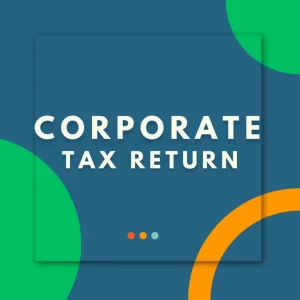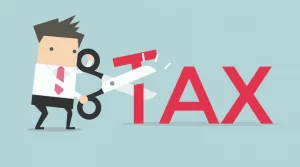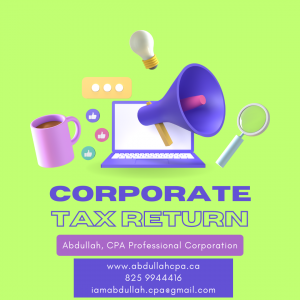Dividends are a useful way to pay yourself through your company. Here’s how dividends are taxed in Canada to make sure you’re optimizing your tax savings.
Dividends can be a good way to pay yourself through your company, and indeed, many physicians choose to pay themselves in dividends from their medical professional corporation, rather than paying themselves a salary. But it’s vital to understand how dividends are taxed in Canada to make sure you’re optimizing both your personal and corporate tax rates.
How you might be earning dividends
Dividend income is typically earned by owning shares in publicly traded companies that issue dividends to their shareholders. Generally, only large, well-established companies issue dividends, as a way to share their profits with investors. Younger, expanding companies, on the other hand, usually reinvest profits in their growth.
Dividends are taxable income
If you hold your shares in a non-registered (taxable) account, then dividends will be subject to tax in the year they are received. (Registered accounts like RRSPs and TFSAs are different — more on this below.) Luckily, dividends received by a Canadian resident from a Canadian business get special treatment with something called the dividend tax credit.
On the other hand, dividends you receive from foreign corporations get taxed at your highest marginal rate. Many countries also impose a withholding tax on dividends paid to you, a foreign investor — most notably the 15% foreign withholding tax on U.S. dividends.
Dividends are tax-advantaged in your RRSP and TFSA
Dividends are taxed differently in registered, tax-advantaged accounts. If you hold your dividend shares in an RRSP, you won’t have to pay any tax on dividends received until the funds are eventually withdrawn from the account. And if you hold your shares in a TFSA, the dividends (like all TFSA income) are tax-free, even when withdrawn.
Eligible versus non-eligible dividends
There are two types of dividends that shareholders can receive:
- Eligible dividends — taxed more favourably. Eligible dividends are paid out by large Canadian businesses that pay higher corporate taxes — public corporations that do not qualify for the small business tax deduction or private corporations with net income higher than the $500,000 small business deduction. Eligible dividends come with an enhanced dividend tax credit, which is why they are taxed more favourably than non-eligible dividends.
- Non-eligible dividends — taxed less favourably. These are paid out by Canadian private corporations (small businesses) that pay corporate tax at a lesser rate. You get a lower dividend tax credit on non-eligible dividends to reflect the fact that the small business paid less corporate tax.
Why do physicians often pay themselves in dividends?
If you’ve incorporated your medical practice and have all your revenue and expenses flowing through your business, you still need to pay yourself in order to live.
Here’s why some physicians opt to pay themselves dividends:
1. It’s easy to manage
Physicians can simply transfer money from their business account to their personal account as needed to meet their spending needs and then declare that amount as dividends paid at the end of their corporate tax year. There’s no messing around with setting up payroll or worrying about Canada Pension Plan (CPP) contributions.
2. It keeps your personal tax rate low
If a physician in Ontario paid herself $100,000 in dividends, that amount would be “grossed-up” to $115,000 and she would pay taxes of $15,629 for the year — an average tax rate of 15.6%. By comparison, if she paid herself a salary of $100,000, she would pay $22,958 in taxes — an average rate of 23%.1
3. It can allow you to income-split with your spouse
Your spouse can become a shareholder of the corporation and if they actually work in the business, they can receive dividends from the corporation at the low dividend tax rate. This would reduce your overall household tax rate. If your spouse does not work in the business, you can only income-split after you, the physician, turn 65.
4. It can allow you to invest more inside the corporation
By keeping your personal tax rate low, paying yourself in dividends allows you to focus on investing the profits of the business inside the corporation and building significant corporate assets.
There is a downside, though: By building up your corporate investments, you may be receiving significant investment income — also known as passive income — and thus limiting your access to the low small-business tax rate. The small business deduction limit is reduced by $5 for every $1 of passive income that exceeds $50,000 and reaches zero once $150,000 of passive income is earned in a year.
Disadvantages of paying yourself dividends
While a physician paying themselves dividends for the duration of their career has its advantages in terms of simplicity, lower personal taxes, income-splitting potential, and allowing the build-up of significant corporate assets, the strategy does have its flaws and complications.
Here are some disadvantages of paying yourself dividends:
1. Dividends don’t generate RRSP contribution room
Unlike paying yourself a salary, paying dividends doesn’t generate RRSP contribution room. A physician who solely pays themselves dividends won’t be able to contribute to an RRSP.
2. You’ll miss out on CPP benefits
If you are paid in dividends, you do not pay into the CPP and you won’t receive CPP benefits in the future. Since self-employed physicians do not receive any workplace pension and are responsible for their own savings for retirement, this can be a considerable disadvantage to a dividend-paying strategy.
There is also an upside: you don’t have to make CPP contributions. Small business owners paying a salary would be required to contribute both the employee and employer portions to CPP.
3. Dividends are not deductible business expenses
While a salary is a deductible expense for the business, dividends are not. This can be a consideration if the business earnings exceed $500,000 per year (the small business deduction threshold). Having a salary to deduct might bring the corporate earnings down below that threshold.
That said, the Canadian tax system is “integrated” so that there is no theoretical advantage to paying yourself a salary versus dividends. While dividends are taxed at a lower rate personally, they’re not eligible for deductions for the corporation. Conversely, a salary is taxed at a higher rate than dividends personally but is a deductible expense for the business.
4. Possible lost opportunities
Be aware that by focusing on your corporation and not saving and investing on the personal side of your ledger (in your RRSP, TFSA and non-registered account), you could be missing out on other tax-saving strategies, income-splitting opportunities (from RRIF income at 65), and being able to fully fund the life you want to lead because your assets are all tied up in the corporation.
When it comes to dividends, seek professional advice to ensure you use dividends wisely. Abdullah CPA can help you plan now so you can be confident in your financial future.
1 Calculation are based on the “gross up” rate of 15% that is applied to non-eligible dividends starting from 2019, and using the Ontario average tax rate of 15.6% for non-eligible dividends and 23.0% for employment income for the 2022 tax year.






